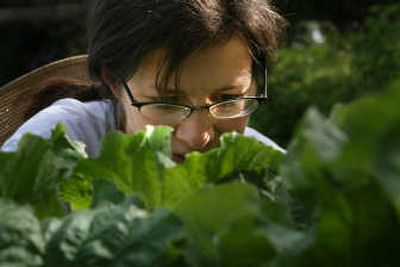Gardening: This year, take extra produce to food banks

My spies around town tell me many of you are forgoing the road trip this summer and staying home to plant a vegetable garden. That’s good news. Growing a vegetable garden is a great family activity, especially when you can eat the results of your hard work. There isn’t anything like watching the face of a child when he or she realizes they just ate a carrot they grew.
And you know how it goes, too. One tomato plant is great but six are even better. When they all ripen, you have far more than you could ever eat. No problem. Donate the extra tomatoes and any other produce and fruit you can’t use to local food banks through the Plant a Row for the Hungry program. In the past five years, Spokane gardeners have donated more than 300,000 pounds of garden fresh produce in the effort. That’s 1.2 million servings of fresh produce. We could certainly do 100,000 pounds this year.
The food banks can certainly use it. Food prices coupled with skyrocketing fuel costs are forcing many folks to make tough choices between food and fuel. According to Rod Wieber, director of Donor and Community Relations for Second Harvest Inland Northwest, many of the neighborhood food banks they work with have seen a 10 to 30 percent increase in people coming through the door seeking assistance in the last few months. Thirty- seven percent of them are children and many of the families have one or more adults working but just not earning enough to afford food and fuel along with other expenses. They just can’t stretch their resources far enough.
On the flip side, Second Harvest has to work harder at finding and then transporting fresh produce into its network. Supplies of produce and fruit that used to be donated to the food banks by grocery stores have been reduced as the stores get more efficient in their ordering. According to Wieber, Second Harvest is spending $20,000 a month to transport food to local food banks, up 10 percent in a year.
Almost any vegetable or fruit is welcomed, but sturdy vegetables and fruits that are commonly available in grocery stores are best. Fragile greens and herbs need to be delivered close to the day the neighborhood food bank is serving clients. Even a pound is welcome. Ask for a donation receipt. You can take a $1.50 a pound as a federal tax donation while the Plant a Row committee gets to tally up the total poundage at the end of the season and brag about it.
Plant a Row for the Hungry is a national effort sponsored locally by The Inland Empire Gardeners and nationally by the Garden Writers Association.